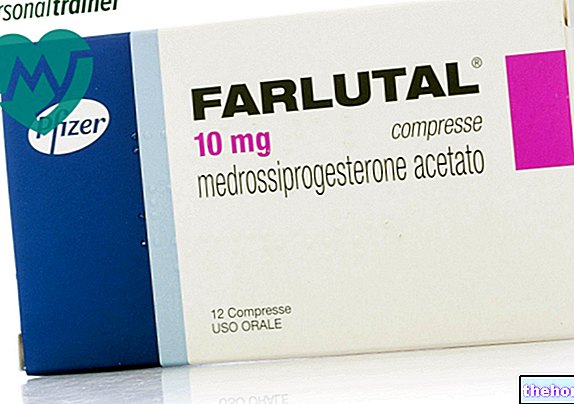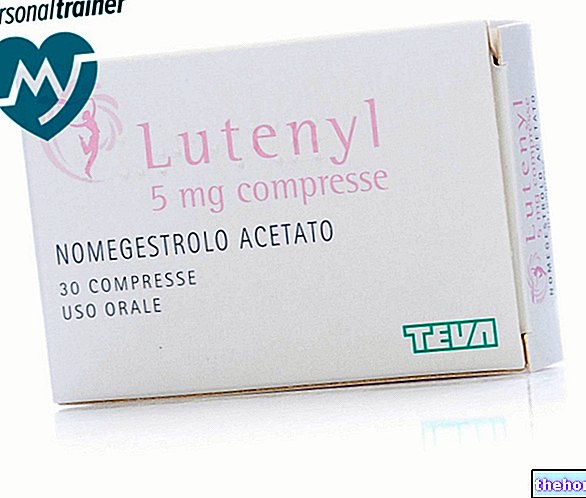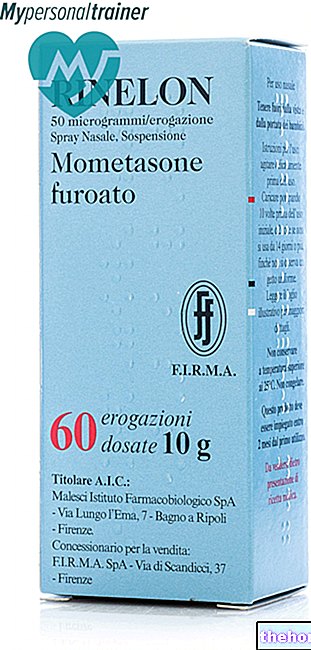Active ingredients: Hydroxycarbamide (hydroxyurea)
ONCO CARBIDE 500 mg hard capsules
Why is Onco Carbide used? What is it for?
PHARMACOTHERAPEUTIC CATEGORY
Other antineoplastic agents
THERAPEUTIC INDICATIONS
Significant therapeutic responses are obtained with ONCO CARBIDE in chronic myeloid leukemia and other chronic myeloproliferative syndromes (essential thrombocythemia, polycythemia vera and idiopathic myelofibrosis). ONCO CARBIDE is also indicated in the treatment of subjects suffering from homozygous sickle cell anemia.
Contraindications When Onco Carbide should not be used
Known hypersensitivity to the active substance or to any of the excipients.
Severe bone marrow depression: leukopenia (with a white blood cell count below 2500 / mm3), thrombocytopenia (with a platelet count below 100000 / mm3) or severe anemia. Pregnancy and breastfeeding. Vaccine against yellow fever.
Precautions for use What you need to know before taking Onco Carbide
ONCO CARBIDE should be used with caution in subjects previously irradiated or undergoing antiblastic therapy, ie with anticancer drugs, and in those with severe renal insufficiency. In subjects already irradiated there may be an "exacerbation of" irradiation erythema.
ONCO CARBIDE should be administered with caution in patients with severe liver disease. Before starting ONCO CARBIDE therapy, any severe anemia should be corrected with whole blood transfusions.
Careful haematological surveillance during treatment with control of hemoglobin, leukocytes and platelets. Treatment must be stopped if white blood cells fall below 2500 / mm3 or platelets below 100000 / mm3 to be resumed only after these parameters rise back to normal values.
Use with caution in patients who are being treated or have already been treated with antineoplastics or radiation therapy for the possible occurrence of bone marrow depression.
Elderly patients are more sensitive to ONCO CARBIDE and require lower doses.
Long-term treatment with hydroxyurea is associated with the appearance of skin and oral reactions. Most of these, such as nail, skin and oral pigmentation, cutaneous xerosis, mouth ulcers and ichthyosis are acceptable and do not require discontinuation of treatment. Skin ulcers are rare but have an effect. Significant collateral of the drug. They appear in patients with chronic myeloproliferative syndromes and in some cases require temporary or permanent suspension of therapy. Skin ulcers are often located near the ankles or in the legs, are painful and sometimes evolve into necrosis. They occur more frequently. in the elderly or in women Most cases reported in the literature have been observed in patients treated with a dose greater than 1 g per day for at least 1 year.
The pathogenesis of skin ulcers remains to be determined even if the drug is thought to damage the basal layer of the epidermis. Withdrawal of hydroxyurea generally leads to complete healing and pain relief.
Interactions Which drugs or foods can modify the effect of Onco Carbide
Tell your doctor or pharmacist if you have recently taken any other medicines, even those without a prescription.
There are no data on the interaction potential of hydroxyurea with other drugs.
Long-time clinical experience indicates that hydroxyurea does not have a high potential for interaction.
Concomitant use with other myelosuppressive drugs or radiotherapy may increase the risk of bone marrow depression or other adverse events.
Avoid concomitant use of attenuated virus vaccines, immunosuppressant therapy. Avoid concomitant use of reverse transcriptase inhibitors, nucleoside analogues. Risk of vasculitis with concomitant or previous use of interferon. Avoid concomitant use of inactivated vaccines (poliomyelitis), use of cyclosporine and tacrolimus.
Warnings It is important to know that:
The product, like most anticancer drugs, has shown carcinogenic properties in animals, under particular experimental conditions.
Fertility, pregnancy and breastfeeding
Ask your doctor or pharmacist for advice before taking any medicine.
Pregnancy: Drugs that affect DNA synthesis, such as hydroxyurea, are potentially mutagenic. Animal studies have shown reproductive toxicity. Hydroxyurea crosses the placenta. Use of the product during pregnancy is contraindicated. However, if this drug is used during pregnancy, the patient should be informed of the potential risk to the fetus. Women of childbearing potential should use contraceptive methods.
Breastfeeding: Hydroxyurea is excreted in breast milk. Breastfeeding should be discontinued while using ONCO CARBIDE.
Effects on ability to drive and use machines
No studies on the ability to drive and use machines have been performed. There are no assumptions or evidence that the drug can change attention and reaction times.
Important information about some of the ingredients
In case of ascertained intolerance to sugars, contact your doctor before taking the medicine.
Dose, Method and Time of Administration How to use Onco Carbide: Posology
In chronic myeloid leukemia, continuous therapy is recommended at a dose of 20-30 mg / kg orally in a single daily dose. Six weeks of treatment represent a sufficient period to determine the effectiveness of ONCO CARBIDE.
If there are clinical signs of a favorable effect, therapy should be continued indefinitely. In sickle cell anemia, continuous therapy is recommended at a dose of 15-30 mg / kg / day orally in one or two daily administrations. In these patients, at least 6-8 months of continuous treatment are required to determine the efficacy of ONCO CARBIDE.
In all cases, the dose of ONCO CARBIDE must be adjusted by the doctor on the basis of the desired clinical effect and the haematological side effects observed. Treatment should be interrupted if the white blood cells drop to less than 2500 / mm3 or the platelets to less than 100000 In these cases the count is repeated after three days and if this tends to rise towards normal values, the therapy is resumed, possibly reducing the dose.
In solid tumors, a therapy with 80 mg / kg orally in a single daily dose can be implemented.
The intermittent dosing scheme offers the advantage of a particularly low toxicity; this scheme is also used in association with radiation therapy.
Overdose What to do if you have taken too much Onco Carbide
Hydroxyurea is a cytostatic agent. In case the undesirable effects are clinically relevant, temporarily interrupt the treatment, check the haematological parameters and, if necessary, restore normal values with blood transfusions.
In case of accidental ingestion / intake of an excessive dose of ONCO CARBIDE, notify your doctor immediately or go to the nearest hospital. If you have any questions about the use of ONCO CARBIDE, ask your doctor or pharmacist.
Side Effects What are the side effects of Onco Carbide
Like all medicines, ONCO CARBIDE can cause side effects, although not everybody gets them.
The main side effect in case of therapy with ONCO CARBIDE is bone marrow depression, which manifests itself with leukopenia, anemia and sometimes thrombocytopenia. Less frequent are the symptoms of the gastrointestinal tract such as stomatitis, anorexia, nausea, vomiting, diarrhea and constipation.
Dysuria, alopecia and oligospermia may rarely occur; azoospermia (absence of spermatozoa) and oligospermia (presence of modest quantities of spermatozoa) are usually reversible. As with other antimitotic drugs, amenorrhea (disappearance of menstruation) has been exceptionally reported. Fever has been reported. Rare cases of acute interstitial lung disease and pulmonary fibrosis have been reported. Secondary leukemia may develop in patients undergoing long-term treatment with hydroxyurea for myeloproliferative diseases such as polycythemia vera and thrombocytosis
Skin ulcers of the legs, reversible on discontinuation of treatment, have been reported rarely with prolonged high-dose treatments. Dermatological reactions such as maculopapular rash and facial erythema, pruritus, hyperpigmentation, melanonychia (damage affecting the blackish-colored nails), dry skin, dermal-nail atrophy, skin peeling, skin lesions and simildermatomyositis (erythematous or erythematous-like lesions) may also be observed -desquamative).
Rare cases of skin malignancies have been reported: basal cell and squamous cell cancer.
In the neurological field, headache, dizziness, disorientation, hallucinations and convulsions have rarely been described. Renal tubular function may be temporarily impaired with consequent increases in blood urea, BUN and creatinine. In some cases an "abnormal alteration of hepatic parameters was observed.
The temporary interruption of ONCO CARBIDE usually overcomes the aforementioned disorders. Compliance with the instructions contained in the package leaflet reduces the risk of undesirable effects.
Reporting of side effects
If you get any side effects, talk to your doctor or pharmacist. This includes any possible side effects not listed in this leaflet. Undesirable effects can also be reported directly through the national reporting system at "www.agenziafarmaco.gov.it/it/responsabili". By reporting side effects you can help provide more information on the safety of this medicine.
Expiry and Retention
Expiry: see the expiry date indicated on the package.
The expiry date refers to the product in intact packaging, correctly stored.
CAUTION: DO NOT USE THE MEDICINAL PRODUCT AFTER THE EXPIRY DATE INDICATED ON THE PACKAGE
Store at a temperature not exceeding 25 ° C
Medicines should not be disposed of via wastewater or household waste. Ask your pharmacist how to dispose of medicines you no longer use. This will help protect the environment.
KEEP THE MEDICINAL PRODUCT OUT OF THE REACH AND SIGHT OF CHILDREN
Composition and pharmaceutical form
COMPOSITION
One capsule contains: Active ingredient: hydroxycarbamide (hydroxyurea) 500 mg. Excipients: lactose; calcium citrate; dibasic sodium citrate; magnesium stearate. Components of the containing capsule: gelatin; titanium dioxide (E171); iron oxide (E172).
PHARMACEUTICAL FORM AND CONTENT
Hard capsules. Pack containing 20 capsules of 500 mg, packed in blisters.
Source Package Leaflet: AIFA (Italian Medicines Agency). Content published in January 2016. The information present may not be up-to-date.
To have access to the most up-to-date version, it is advisable to access the AIFA (Italian Medicines Agency) website. Disclaimer and useful information.
01.0 NAME OF THE MEDICINAL PRODUCT
ONCO CARBIDE
02.0 QUALITATIVE AND QUANTITATIVE COMPOSITION
One capsule contains:
Active principle: hydroxyurea 500 mg.
Excipients: lactose.
For the full list of excipients, see section 6.1.
03.0 PHARMACEUTICAL FORM
Hard capsule for oral use.
04.0 CLINICAL INFORMATION
04.1 Therapeutic indications
Significant therapeutic responses are obtained with ONCO CARBIDE in chronic myeloid leukemia and other chronic myeloproliferative syndromes (essential thrombocythemia, polycythemia vera and idiopathic myelofibrosis). ONCO CARBIDE is also indicated in the treatment of subjects suffering from homozygous sickle cell anemia.
04.2 Posology and method of administration
In chronic myeloid leukemia and other chronic myeloproliferative syndromes (essential thrombocythemia, polycythemia vera and idiopathic myelofibrosis) continuous therapy is recommended at a dose of 20-30 mg / kg / day orally in one or two daily administrations. Six weeks of treatment represent a sufficient period to determine the effectiveness of ONCO CARBIDE.
If there are clinical signs of a favorable effect, therapy should be continued indefinitely.
In sickle cell anemia, continuous therapy is recommended at a dose of 15-30 mg / kg / day orally in one or two daily administrations. In these patients, at least 6-8 months of continuous treatment are required to determine the efficacy of ONCO CARBIDE.
In all cases, the dose of ONCO CARBIDE must be adjusted by the doctor on the basis of the desired clinical effect and the haematological side effects observed. Treatment should be interrupted if the white blood cells drop to less than 2500 / mm3 or the platelets to less than 100000 In these cases the count is repeated after three days and if this tends to rise towards normal values, the therapy is resumed, possibly reducing the dose.
In solid tumors, a therapy with 80 mg / kg orally in a single daily dose can be implemented.
The intermittent dosing scheme offers the advantage of a particularly low toxicity; this scheme is also used in association with radiation therapy.
04.3 Contraindications
Known hypersensitivity to the active substance or to any of the excipients.
Severe bone marrow depression: leukopenia (with a white blood cell count less than 2500 / mm3), thrombocytopenia (with a platelet count less than 100,000 / mm3) or severe anemia. Pregnancy and breastfeeding.
Vaccine against yellow fever.
04.4 Special warnings and appropriate precautions for use
ONCO CARBIDE should be used with caution in subjects previously irradiated or undergoing antiblastic therapy and in those with severe renal insufficiency. In subjects already irradiated there may be an "exacerbation of" irradiation erythema.
ONCO CARBIDE should be administered with caution in patients with severe liver disease.
Use caution in patients who are being treated or have already been treated with antineoplastics or radiation therapy for the possible occurrence of bone marrow depression.
Before starting ONCO CARBIDE therapy, any severe anemia should be corrected with whole blood transfusions.
Careful haematological surveillance during treatment with control of hemoglobin, leukocytes and platelets. Treatment must be stopped if white blood cells fall below 2500 / mm3 or platelets below 100000 / mm3 to be resumed only after these parameters rise back to normal values.
Elderly patients are more sensitive to ONCO CARBIDE and require lower doses.
The product, like most anticancer drugs, has shown carcinogenic properties in animals, under particular experimental conditions.
Long-term treatment with hydroxyurea is associated with the appearance of skin and oral reactions. Most of these, such as nail, skin and oral pigmentation, cutaneous xerosis, mouth ulcers and ichthyosis are acceptable and do not require treatment discontinuation. Skin ulcers are rare manifestations but have an effect. Significant collateral of the drug. They appear in patients with chronic myeloproliferative syndromes and in some cases require temporary or permanent suspension of therapy. Skin ulcers are often located near the ankles or in the legs, are painful and sometimes evolve into necrosis. They occur more frequently. in the elderly or in women. Most cases reported in the literature have been observed in patients treated with a dose greater than 1 g per day for at least 1 year. The pathogenesis of skin ulcers remains to be determined even if the drug is believed to harm the basal layer of the epidermis.
Withdrawal of the hydroxyurea generally leads to complete healing and pain relief.
Important information about some of the ingredients
This medicine contains lactose: Patients with rare hereditary problems of galactose intolerance, the Lapp lactase deficiency, or glucose-galactose malabsorption should not take this medicine.
04.5 Interactions with other medicinal products and other forms of interaction
There are no data on the interaction potential of hydroxyurea with other drugs.
Long-time clinical experience indicates that hydroxyurea does not have a high potential for interaction.
Concomitant use with other myelosuppressive drugs or radiotherapy may increase the risk of bone marrow depression or other adverse events.
Avoid concomitant use of attenuated virus vaccines, immunosuppressant therapy. Avoid concomitant use of reverse transcriptase inhibitors, nucleoside analogues. Risk of vasculitis with concomitant or previous use of interferon. Avoid concomitant use of inactivated vaccines (poliomyelitis), use of cyclosporine and tacrolimus.
04.6 Pregnancy and lactation
Pregnancy: drugs that affect DNA synthesis, such as hydroxyurea, are potentially mutagenic. Studies in animals have shown reproductive toxicity. Hydroxyurea crosses the placenta.
The use of the product during pregnancy is normally contraindicated. However, if this drug is used during pregnancy, the patient should be informed of the potential risk to the fetus.
Women of childbearing age must use contraceptive methods.
Feeding time: Hydroxyurea is excreted in breast milk. Breastfeeding should be discontinued while ONCO CARBIDE is being used.
04.7 Effects on ability to drive and use machines
No studies on the ability to drive and use machines have been performed.
There are no assumptions or evidence that the drug can change attention and reaction times.
04.8 Undesirable effects
The main side effect in case of therapy with ONCO CARBIDE is bone marrow depression, which manifests itself with leukopenia, anemia and sometimes thrombocytopenia. Less frequent are the symptoms of the gastrointestinal tract such as stomatitis, anorexia, nausea, vomiting, diarrhea and constipation. Dysuria, alopecia and oligospermia may rarely occur; azoospermia and oligospermia are usually reversible. As with other antimitotic drugs, amenorrhea has been exceptionally reported.
Fever has been reported.
Rare cases of acute interstitial lung disease and pulmonary fibrosis have been reported.
Secondary leukemia may develop in patients undergoing long-term treatment with hydroxyurea for myeloproliferative diseases such as polycythemia vera and thrombocytosis
Skin ulcers of the legs, reversible on discontinuation of treatment, have been reported rarely with prolonged high-dose treatments.
Dermatological reactions such as macular rash, facial erythema, pruritus, hyperpigmentation, melanonychia, dry skin, dermal-nail atrophy, skin peeling, skin lesions similar to dermatomyositis may also be observed.
Rare cases of skin malignancies have been reported: basal cell and squamous cell cancer
In the neurological field, headache, dizziness, disorientation, hallucinations and convulsions have rarely been described. Renal tubular function may be temporarily impaired with consequent increases in blood urea, BUN and creatinine. In some cases an "abnormal alteration of hepatic parameters was observed.
The temporary interruption of ONCO CARBIDE usually overcomes the aforementioned disorders.
Reporting of suspected adverse reactions
Reporting of suspected adverse reactions occurring after authorization of the medicinal product is important as it allows continuous monitoring of the benefit / risk balance of the medicinal product. Healthcare professionals are asked to report any suspected adverse reactions via the national reporting system. "address www.agenziafarmaco.gov.it/it/responsabili.
04.9 Overdose
Hydroxyurea is a cytostatic agent. In case the undesirable effects are clinically relevant, temporarily interrupt the treatment, check the haematological parameters and, if necessary, restore normal values with blood transfusions.
05.0 PHARMACOLOGICAL PROPERTIES
05.1 Pharmacodynamic properties
Medicinal product category: other antineoplastic agents.
ATC: L01XX05.
ONCO CARBIDE (Hydroxyurea) is a drug with antineoplastic action available for oral use. The specific mechanism of action of hydroxyurea is not fully known. However, it is believed that the drug causes an immediate inhibition of DNA synthesis by acting as a ribonucleotide reductase inhibitor without interfering with RNA or protein synthesis.
In "sickle cell anemia, hydroxyurea induces an increase in the concentration of fetal hemoglobin (HbF)." HbF interferes with HbS polymerization and consequently hinders the sickling of the erythrocyte. In clinical studies with hydroxyurea a significant increase in HbF from baseline was observed.
05.2 Pharmacokinetic properties
Hydroxyurea is well absorbed from the gastrointestinal tract. Peak plasma levels are observed around 2 hours after oral administration. The plasma half-life is of the order of about 2 hours. About 80% of the drug is metabolised to urea at liver level and excreted in the urine within 12 hours.
Hydroxyurea reaches appreciable concentrations in the central nervous system.
05.3 Preclinical safety data
Single dose oral toxicity was examined in rats and mice. The LD50 was equal to 7330 mg / kg in the mouse and 5780 mg / kg in the rat. Repeated dose toxicity studies (subacute and chronic) in rats, dogs and monkeys revealed dose-dependent bone marrow hypoplasia of mild to moderate intensity; only with higher dosages above the clinical dose, testicular atrophy with block of spermatogenesis, weight loss, cardiovascular effects and haematological alterations were observed.
Hydroxyurea is a cytostatic drug and, due to its mechanism of action common to other anticancer drugs, it is conceivable that it may have potential effects on reproduction, mutagenesis, teratogenesis and carcinogenesis.
06.0 PHARMACEUTICAL INFORMATION
06.1 Excipients
Lactose; calcium citrate; dibasic sodium citrate; magnesium stearate.
06.2 Incompatibility
Not known.
06.3 Period of validity
5 years, in intact packaging.
06.4 Special precautions for storage
Store at a temperature not exceeding 25 ° C.
06.5 Nature of the immediate packaging and contents of the package
PVC / PVDC blister heat sealed with aluminum foil / PVDC.
Box of 20 hard capsules of 500 mg.
06.6 Instructions for use and handling
ONCO CARBIDE is a medicine that must be handled with caution. People who are not taking ONCO CARBIDE, especially pregnant women, should not come into contact with the drug. If you need to handle the capsules, you should wear disposable gloves and wash your hands before and after handling the capsules. In case of opening the capsule, the excess powder must be eliminated with absorbent paper to be closed in a closed plastic bag, to be disposed of following the local procedures for the disposal of drugs.
07.0 MARKETING AUTHORIZATION HOLDER
TEOFARMA S.r.l. via F.lli Cervi, 8 - 27010 Valle Salimbene (PV)
08.0 MARKETING AUTHORIZATION NUMBER
A.I.C .: 021510019
09.0 DATE OF FIRST AUTHORIZATION OR RENEWAL OF THE AUTHORIZATION
1970 - 2010
10.0 DATE OF REVISION OF THE TEXT
March 2015




























